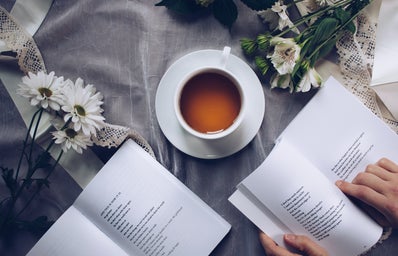Speaking for myself, I find that the idea of beauty is always in the back of my mind. I am constantly gauging how I measure up to beauty standards, even subconsciously. These thoughts run like currents through my head during the most routine moments of my day.
For a few years now, I have been actively attempting to rewire my brain and head off this hyperfixation with my appearance. I’ve pretty voraciously consumed books, podcasts, films, and other forms of media that comment on the social significance of beauty and bodies, hoping to better understand how I have internalized certain unrealistic expectations.
I came across Emily Ratajkowski’s book My Body and immediately gravitated toward it. Before reading, I didn’t necessarily know what it was about; I didn’t even really know much about Emily Ratajkowski, except that she’s a model and widely regarded as the archetype of female beauty. I was intrigued at what she had to contribute to this conversation about beauty. Undoubtedly, she has a unique perspective.
My Body takes the form of a memoir. Throughout each short chapter, Ratajkowski zeros in on moments of her life, connecting these seemingly insignificant snippets to broader themes such as objectification, misogyny, and sexuality. In my opinion, the crux of her monologue has to do with the commodification of beauty. My Body implies that an association between beauty and value is a huge reason as to why women feel compelled to attain beauty standards.
For Ratajkowski, this value is incredibly tangible and takes the form of wealth and celebrity. For us normal folk, the perks of being deemed beautiful are much more subtle, yet still compelling: social status, admiration, Instagram followers, and just overall better social treatment, to name a few.
Although initially empowered by the riches and fame that she was able to achieve through selling her image, My Body tracks Ratajkowski’s gradual realization that this power is limited and fleeting. The unapologetic sense of control that Ratajkowski felt at the start of her career as she “sexualized herself” dissolves as she is continually exploited and objectified by agents, audiences, casting directors, photographers, etc. She uses numerous poignant vignettes to demonstrate her point.
In perhaps the most powerful chapter, Ratajkowski describes an incident that occurred on the set of the infamous “Blurred Lines” music video. She remembers that, at first, the environment was carefree and fun. Alongside the other female models and the (majority female) crew, everything felt very lighthearted and silly. In retrospect, Emily now notes that this brazenness was naive; she and the other women around her didn’t actually have any authority, or even any autonomy.
She recounts being inappropriately touched by Robin Thicke on set that day, and how the once-playful atmosphere immediately sobered. This was a reminder to everybody present, as Ratajkowski notes, “how limited any woman’s power is when she survives and even succeeds in the world as a thing to be looked at.” For me, this anecdote indicates that the power of beauty, or “pretty privilege,” as it is more colloquially termed, only exists through a process of objectification and as a result of an unequal power dynamic that leaves women “indebted to the men whose desire granted them that power in the first place.” Emily Ratajkowski’s message is clear: beauty alone is not liberation. Ultimately, true liberation is a process that involves the self, and is something that comes from within—the praise and lust that beauty can elicit from others.



